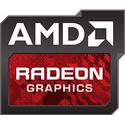
NVIDIA's Latest 576.02 WHQL Driver Add Up to 8% Performance Bump in Synthetic Benchmarks
NVIDIA's latest GeForce 576.02 WHQL driver, released on April 16, which brought support for the GeForce RTX 5060 Ti, appears to deliver unexpected performance gains for several "Blackwell" GeForce RTX 50 series GPUS in UL's 3DMark Steel Nomad benchmark. ComputerBase community users with RTX 5070, 5070 Ti, and 5080 GPUs reported three to eight percent score uplifts after upgrading, prompting ComputerBase to verify these claims under controlled conditions. Their independent testing confirms that the RTX 5080 jumps from 8,094 to 8,550 points (a 5.6 percent boost), the RTX 5070 Ti climbs from 6,463 to 6,932 points (7.3 percent), and the RTX 5070 improves from 4,838 to 5,242 points (8.4 percent).
By contrast, the flagship RTX 5090 sees only a marginal lift from 14,032 to 14,117 points, which is well within standard test variance, while the RTX 5060 Ti remains essentially unchanged at roughly 3,530 points, likely because it launched with an up-to-date driver. When evaluating other popular UL benchmarks, namely Speed Way and Time Spy, ComputerBase observed no measurable uplift from driver version 576.02. In fact, some Time Spy runs dipped slightly, underlining that the anomaly appears confined to Steel Nomad's specific workload. It's important to note that synthetic benchmarks do not always translate directly to in-game performance. Historical data from ComputerBase's GPU suite suggests Blackwell cards sometimes outperform their synthetic gains in actual titles, but results vary by engine and title. Besides RTX 5060 Ti support and a strange performance increase, the 576.02 WHQL fixes a host of game‑specific crashes, stutters, aliasing, and stability issues across titles like Fortnite, Overwatch 2, Hellblade II, Control, and more.
By contrast, the flagship RTX 5090 sees only a marginal lift from 14,032 to 14,117 points, which is well within standard test variance, while the RTX 5060 Ti remains essentially unchanged at roughly 3,530 points, likely because it launched with an up-to-date driver. When evaluating other popular UL benchmarks, namely Speed Way and Time Spy, ComputerBase observed no measurable uplift from driver version 576.02. In fact, some Time Spy runs dipped slightly, underlining that the anomaly appears confined to Steel Nomad's specific workload. It's important to note that synthetic benchmarks do not always translate directly to in-game performance. Historical data from ComputerBase's GPU suite suggests Blackwell cards sometimes outperform their synthetic gains in actual titles, but results vary by engine and title. Besides RTX 5060 Ti support and a strange performance increase, the 576.02 WHQL fixes a host of game‑specific crashes, stutters, aliasing, and stability issues across titles like Fortnite, Overwatch 2, Hellblade II, Control, and more.



































































